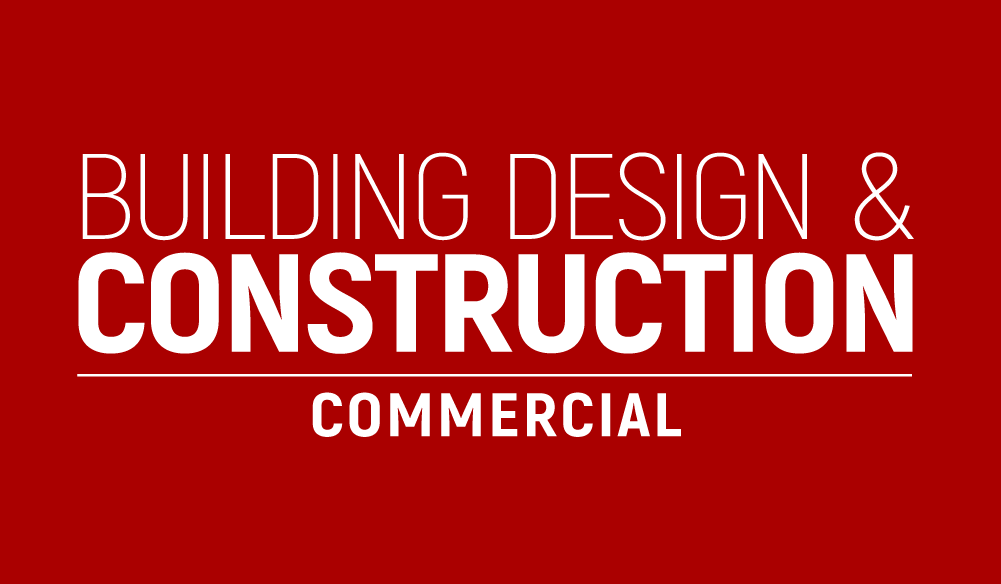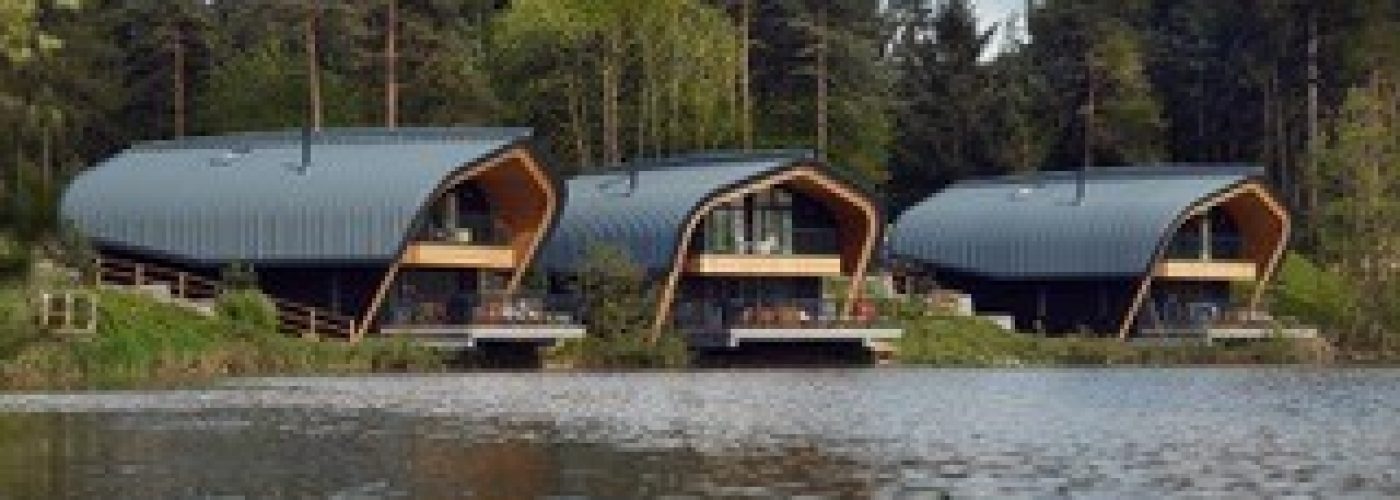The construction of three new Waterside Lodges at Center Parcs Elveden Forest is an ambitious architectural and engineering project. The stunning new lodges have been designed to compliment the woodland landscape in which they sit, while connecting guests with the surrounding natural environment. Wood was a natural choice of building material, which would blend in seamlessly with the natural forest setting.
When designing the new accommodation, the choice of building materials was a key consideration for the architectural practice Jackson Design Associates (JDA). They were faced with the challenge of not only creating a design, which would blend in with the natural surroundings, but also be sufficiently lightweight to achieve the impressive arches, overhangs, and cantilever designs, without needing a considerable amount of foundation works.
The only material that could meet all the requirements of the structure was Metsä Wood’s light, yet extremely strong Kerto® LVL (laminated veneer lumber).
The use of Kerto LVL enabled an efficient and fast building time, which was a key factor as the project needed to be completed in time for the summer.
Innovative design
Architects JDA created an elegant shape, reminiscent of a boat turned upside-down. The lodges have two levels; the forest-facing side is situated higher, accessed through a wooden bridge on the first floor. The first floor contains three en-suite bedrooms, two of which open onto a deck and balcony facing the lake. The ground floor combines kitchen, living and dining areas opening out on to a terrace on the waters edge.
Luke Hunter, Director at JDA said: “It was important to the Client to develop an exciting and interesting building form that made references to the boating activities of the watersports lake. This concept is continued inside the lodges where the ‘ribs’ of the boat hull are exposed to express the building’s structure and form.”
Particularly unique to this project is a two storey ‘leaning’ arch overhanging the lake edge, which is also curved three times to suit the sectional profile of the main roof. While providing an impressive architectural feature, the arch also serves as a shelter to the cantilevered terrace and first floor balcony, which look out over the lake.
The architects at JDA needed to find a solution that would make the structure easy to assemble and stay/remain stable from wind action or ground settlement. They choose to use lightweight and versatile Kerto LVL for the portal frames.
Paul Kent, Development and Construction Director at Center Parcs said: “We have been delighted to work with Metsä Wood on the supply of Kerto LVL for our new Waterside Lodges at Elveden Forest. The versatility of their product has helped to create a unique design feature in this brand new style of accommodation, complementing the nautical theme and lakeside setting.”
Fire safety
Another important consideration was fire safety – an issue that often discourages architects from specifying wood. However, in the event of a fire, Kerto LVL performs predictably. As a result of burning, the surface of Kerto becomes charred, which protects the product, insulates it and slows down the burning process.
Strong yet lightweight building material
Kerto LVL was chosen as the construction material as its solid bonded structure offers incredible strength and dimensional stability, while its high strength to weight ratio allows for smaller spacing in mechanical connections. It is also a versatile and lightweight material, which is easy to work with.
Luke Hunter, also said: “Kerto LVL was the perfect choice to help us achieve the leaning arch and thin roof / facia profile on the lake facing elevation. This flexible material helped to overcome the challenge of cutting the leaning, curved roof edge on an angle. A number of systems were investigated to achieve this, however, Kerto LVL was the only material that fully achieved the concept’s vision.“
One of the most complex elements of the structure was an exposed arch at the front, which leans towards the lake. This needed to withstand biaxial bending and compression, while supporting the roof structure with a large cantilever. Kerto LVL Q-panels were used to create the long span to the first floor deck, which was designed to bear the weight of the column horizontally with a spring support.
Another factor was that the angled arch had to have a considerable bending moment connection at the top. This had to be manufactured in such a way that there was a perfect connection between the deck and arch, resulting in an irregular shape.
Vertical columns were formed with two members spaced to support the first floor’s beams and curved roof beams. Kerto LVL was also used to create a recessed infill detail, closing the gap between the two vertical columns, a bespoke detail developed by JDA and Metsä Wood.
Innovative bracing and connections
The columns, floor beams and support ribs of the curved roof were created using Kerto LVL Q-panel structural members. This allowed for smaller spacing in the doweled circular bending moment connection and better moisture stability.
The bracing of the roof and floor was provided by Kerto LVL Q-panels, which were connected together with 3-dimentional screwing. In this way no steel bracing was required.
Engineering firm, BSP Consulting, designed the foundations and the steel platform supporting the frames, which cantilevered over the lake. The Kerto LVL frames, consisting of the arch, two columns and the floor beam, are connected to the steel through metal shoes, which transfer shear and horizontal forces to the platform.
Working together to solve the structural engineering
Divisional Operations Manager at Cocksedge Building Contractors, Tom Courtney, said: “The project combined a unique architectural approach with challenging structural engineering to great effect. The success of the project demonstrates the technical know-how and expertise of everyone involved.
“The use of engineered wood allowed us to overcome a number of challenges that simply wouldn’t have been solved using other materials, while at the same time maintaining a look and feel to match the surrounding natural environment.”
“The use of such a versatile and lightweight material as Kerto LVL, made the entire build process much more straightforward and faster.”
The whole structure was modelled using BIM software – this enabled the architect and the rest of the team to easily identify the elements and understand how they would be incorporated to create the finished design. This was an important factor as much of the construction process would take part offsite.
The structural analysis of all timber elements was carried out using BS EN 1995-1 and UK National annex.
Efficiency with off-site construction
The whole system was designed in such a way that it allowed for quick and sequential installation to speed up the process and avoid disturbance at Center Parcs.
All elements were prepared, finished and pre-drilled for connections.
The use of Kerto LVL elements throughout the construction project offered a solution that was at least 20 per cent cheaper than other timber materials.
Overall, the use of Kerto LVL and the collaboration between everyone involved in the project made Centre Parcs lodges an extremely efficient building.
Sustainable building
The use of Kerto LVL as a solution instead of alternative building materials meant that less energy was used during the installation. This combined with the fact that timber has excellent insulation values and reduced the whole project’s carbon footprint.
Hunter said: “Wood is the ideal material of choice to reflect the forest location and was also selected to correlate with the Center Parcs Sustainability Strategy.”
The end result is breath taking and a great reflection of the hard work and ingenuity of the project design team, engineering know-how, and the vision of both the client and architect.





